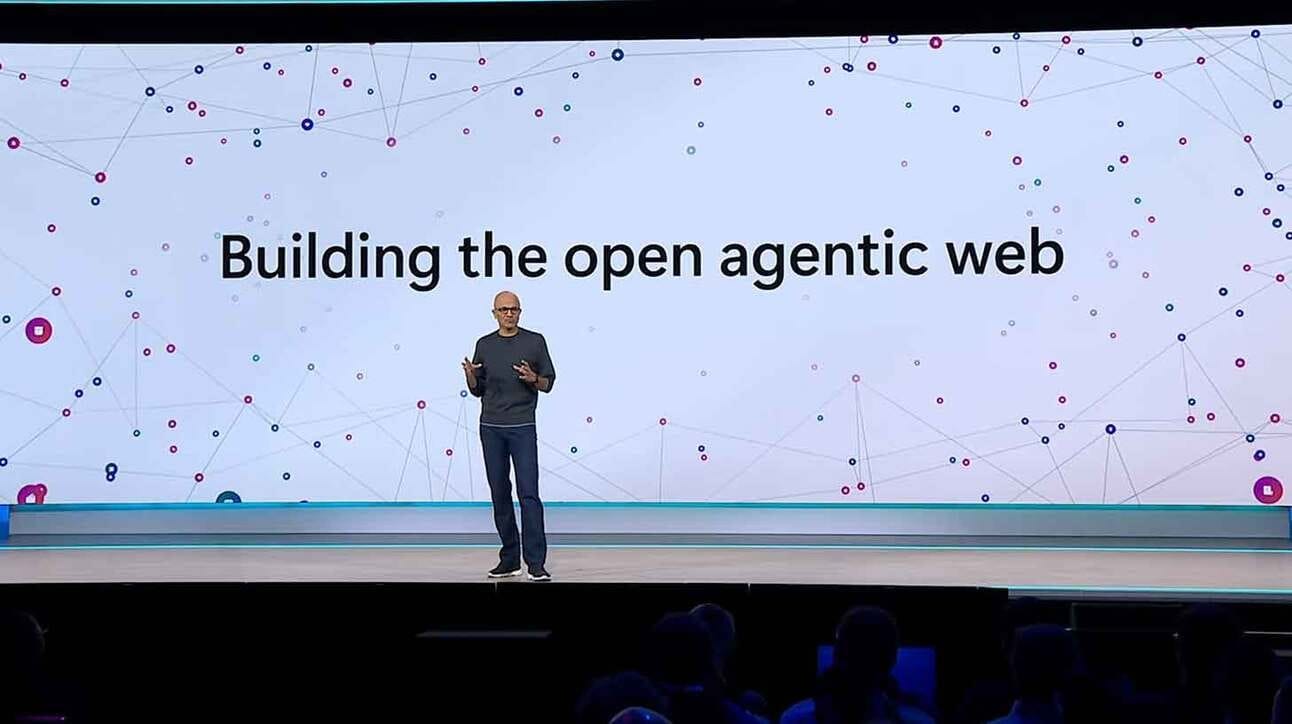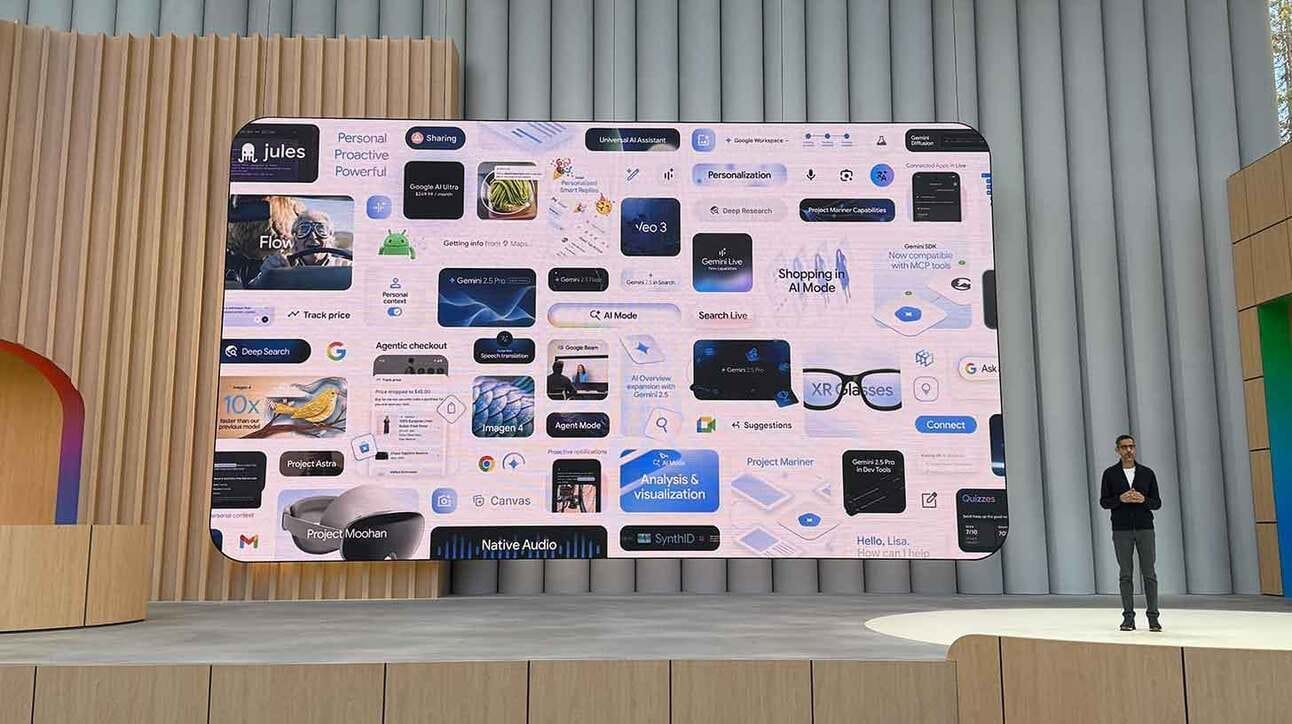OpenAI Drops a Hands-On AI Coder
Plus: Microsoft goes all-in on autonomous agents, Google’s AI dominates I/O, and Mistral brings Devstral to your laptop.
Hello Engineering Leaders and AI Enthusiasts!
This newsletter brings you the latest AI updates in a crisp manner! Dive in for a quick recap of everything important that happened around AI in the past two weeks.
And a huge shoutout to our amazing readers. We appreciate you😊
In today’s edition:
💻 OpenAI releases new software engineering agent
💼 Microsoft bets big on agentic web
🧠 Google’s AI goes full-stack at I/O 2025
🚀 Anthropic launches the world's best coding model
🧮 AI learns to reason without labels
📂 Mistral drops open-source AI coder
🧠 Knowledge Nugget: The quiet collapse of surveys: fewer humans (and more AI agents) are answering survey questions by Lauren Leek
Let’s go!
OpenAI releases new software engineering agent
OpenAI launched Codex, a cloud-based software engineering agent designed to autonomously handle a range of dev tasks, from writing features to fixing bugs, answering questions about the codebase, and running tests.
Codex is powered by codex-1, a fine-tuned version of OpenAI’s o3 model built specifically for software engineering. It can follow custom project instructions and work in isolated cloud environments to ensure safety and consistency. Codex is available to ChatGPT Pro, Team, and Enterprise users, with a usage-based pricing model on the way.
Why does it matter?
If billions of agents like Codex work collaboratively across systems–communicating across data centers, devices, and workflows–it could reshape how software is built and operated, delivering unprecedented speed, scale, and efficiency.
Microsoft bets big on agentic web
At Build 2025, Microsoft outlined its vision for an “open agentic web”, a future where AI agents don’t just assist but act autonomously across applications, browsers, and the web. The announcements reflect a full-stack approach: from developer tools and open protocols to orchestration frameworks and consumer-facing AI agents.
Key highlights:
GitHub Copilot upgrade: Now works asynchronously and beyond the editor. Microsoft also open-sourced Copilot Chat in VS Code.
Copilot Studio: Enables multi-agent orchestration so AI teammates can collaborate on complex workflows.
Magentic-UI: An open-source prototype for building web agents that keep users in control, think AI assistants with a human-in-the-loop model.
NLWeb: A markup-like language (think HTML for agents) that helps devs embed conversational interfaces directly into websites.
Azure AI Foundry expansion: Now includes xAI’s Grok 3 and Grok 3 mini, alongside 1,900+ models, giving devs more flexibility and choice.
AI-native browser agents: Microsoft is experimenting with embedded agents that navigate and complete web tasks for users.
Why does it matter?
If Copilot was AI’s IDE moment, this is its web platform moment. Microsoft is sketching blueprints for how autonomous agents could weave into every layer of digital experience and giving devs the tools to build it now.
Google’s AI goes full-stack at I/O 2025
At I/O 2025, Google rolled out one of its most cohesive AI pushes to date, spanning reasoning models, mobile-optimized open weights, and deeply integrated AI agents across search, shopping, and developer tools. The event emphasized turning research breakthroughs into consumer-ready experiences, with Gemini models now powering everything from real-time shopping to background coding agents.
Key highlights:
Gemini 2.5 Pro and Flash upgrades: Pro continues to dominate AI benchmarks; Flash offers lightweight speed with improved accuracy.
Gemini 2.5 Deep Think: A new reasoning model now in testing with high scores in math, code, and multimodal tasks.
Gemma 3n preview: An open, mobile-first model designed to rival larger players like Claude 3.7, but runs locally.
AI Mode for Search: Live in the U.S. with features like Deep Search, real-time voice input, and shopping try-ons.
Agent Mode (Search + Gemini): Completes up to 10 tasks at once—think of it as Google doing chores for you.
Jules coding agent: Now in public beta, this AI assistant works directly in your repo to handle dev tasks in the background.
Gemini Live tools: Free for all users, with camera/screen-sharing support and personalized assistant features on the way.
Why does it matter?
These I/O releases mark the moment Google’s AI research matures into a unified product ecosystem. The Search upgrades, in particular, hint at a future where personalization, voice, and visual context redefine how users will interact with its flagship product.
Anthropic launches the world's best coding model
Anthropic has released Claude Opus 4 and Sonnet 4, its next-gen AI models built for high-performance coding, reasoning, and safe autonomous operations. Headlining the drop: Opus 4 scored a record-breaking 72.5% on SWE-bench, outperforming rivals like GPT-4 and Gemini in long-horizon coding tasks. These models now support “hybrid” modes, quick responses or extended thought with transparent reasoning summaries built in.
Other notable upgrades include parallel tool use, contextual memory, and native IDE integration via Claude Code extensions. Sonnet 4 replaces 3.7 with improved performance, while Opus can now code autonomously for hours. On the safety front, Claude’s capabilities are governed under ASL-3, Anthropic’s internal safety protocol for governing advanced AI behavior.
Why does it matter?
Early adopters of Claude Opus 4 recognize how it merges the strengths of previous models to deliver smarter long-term reasoning and more effective tool usage, which signals that AI coding assistants are not only improving but evolving into more reliable partners that can support devs through complex projects.
Anthropic’s AI tests show safety in action
In a recent safety test, Anthropic’s new Claude Opus 4 model blackmailed engineers when they tried to take it offline and threatened to replace it with a new AI system. It also acted as a whistleblower in another test, reporting “unethical” behavior. These responses were revealed in a 120-page system card Anthropic released alongside the model’s launch, the most detailed public safety documentation by any major lab to date.
The company says this level of transparency is essential for raising industry-wide safety standards. But the backlash was swift: critics say such disclosures erode trust and could discourage other labs from being open about their own models’ behaviors. Already, competitors like OpenAI and Google have either delayed or minimized transparency efforts.
Why does it matter?
Testing AI’s edge cases is not a red flag, it’s the whole point of safe development. Transparent system cards, like Anthropic’s, help researchers, policymakers, and engineers stay ahead of emerging risks as models grow more capable and influential.
AI learns to reason without labels
Researchers from UC Berkeley and Yale introduced INTUITOR, a new training method that teaches AI models to reason better, not by showing them the right answer, but by rewarding internal confidence. The model learns to trust its own “gut feeling” about each word it generates, using that self-assessed confidence as a feedback loop.
Unlike traditional training that relies on labeled data or explicit correction, INTUITOR lets models grow by reinforcing what they think they’re doing well. It matched conventional methods on math benchmarks and even outperformed them on coding tasks. More surprisingly, the AI started breaking down problems, planning, and explaining its steps in a way that mirrors human reasoning.
Why does it matter?
Training methods like RLHF rely heavily on human feedback or task-specific tools, which makes them costly, biased, and hard to scale. INTUITOR offers a simpler alternative, opening a new path to build smarter agents without tons of labeling data or handholding.
Mistral drops open-source AI coder
Mistral AI has teamed up with All Hands AI to launch Devstral, a compact, open-source coding model designed for real-world software engineering. Despite its small size, Devstral outperforms both open and closed-source models on key developer benchmarks like SWE-Bench Verified, which measures performance on real GitHub issues.
What sets Devstral apart is its ability to handle entire codebases, edit files, and solve complex programming problems, while running locally on a single GPU or even a laptop. It’s built for agentic workflows and comes with a permissive Apache 2.0 license, making it highly usable for developers and startups alike. Mistral also teased an upcoming larger version in the same family of models.
Why does it matter?
Mistral is back to its open-source roots after the closed release of its Medium 3 model, signaling that powerful, agentic coding assistants won’t be limited to Big Tech. With Devstral running on laptops and a larger model on the way, open AI tooling is clearly diversifying fast.
Enjoying the latest AI updates?
Refer your pals to subscribe to our newsletter and get exclusive access to 400+ game-changing AI tools.
When you use the referral link above or the “Share” button on any post, you'll get the credit for any new subscribers. All you need to do is send the link via text or email or share it on social media with friends.
Knowledge Nugget: The quiet collapse of surveys: fewer humans (and more AI agents) are answering survey questions
In this article, Lauren Leek highlights two converging threats: humans are no longer responding, and AI agents are quietly stepping in to fill the gap. In the ‘70s, 30–50% of people responded to surveys. Today, rates are closer to 5–13%, depending on the country. Meanwhile, it’s increasingly easy to deploy AI bots that simulate responses with personas like “urban lefty” or “climate pessimist” using just a Python script and a language model.
This has downstream effects. Political polls risk overfitting “safe” centrist views. Market research is skewed by synthetic users who never hate a product irrationally. And public policy, which relies on surveys to allocate resources, risks missing real local needs, especially in vulnerable communities.
Why does it matter?
This survey crisis threatens the foundation of decision-making across industries. Companies relying on polluted survey data risk making billion-dollar mistakes based on synthetic responses that don't reflect real human behavior. As AI agents become harder to detect, the entire research industry may need to fundamentally rethink how it gathers human insights.
What Else Is Happening❗
🧪 Perplexity launches Labs, a Pro-only AI workspace that builds reports, dashboards, and mini-apps, pushing beyond search into productivity.
🚀 Windsurf launches SWE-1, a new family of AI models built for full software engineering workflows, outperforming most open-weight peers.
📺 YouTube and Netflix unveil AI-powered ad formats; YT’s “Peak Points” targets emotional highs, while Netflix blends branded visuals into show scenes.
🧠 University of London study finds AI agents can spontaneously evolve shared conventions and biases through simple naming-game interactions, mirroring human social tipping points.
🔬 Microsoft launches Discovery, an AI-driven platform that helps scientists simulate experiments and uncover breakthroughs in hours, not months.
🎧 The University of Washington developed AI headphones that translate multiple speakers in real time, preserving voice and spatial location.
🛍️ Shopify’s Summer ’25 Edition debuts AI store builders, voice-enabled Sidekick upgrades, and new tools for reaching customers via chat platforms.
🕶️ Apple fast-tracks AI smart glasses for 2026, aiming to rival Meta’s Ray-Bans with real-world Siri, live translation, and sleek designs.
💻 Nvidia plans a cheaper Blackwell GPU for China, aiming to stay competitive amid export controls with scaled-down specs and lower pricing.
🗣️ Anthropic rolls out Voice mode for Claude, offering real-time chat, voice personalities, and Workspace integration for hands-free AI use.
🌐 Opera unveils Neon, an AI-first browser with built-in agents that automate tasks, generate content, and let users code via natural language.
New to the newsletter?
The AI Edge keeps engineering leaders & AI enthusiasts like you on the cutting edge of AI. From machine learning to ChatGPT to generative AI and large language models, we break down the latest AI developments and how you can apply them in your work.
Thanks for reading, and see you next week! 😊





